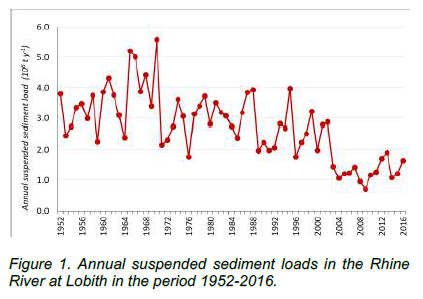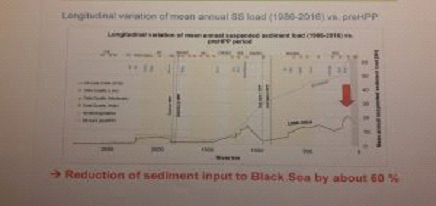Dramatic sediment deficits have already been reported for e.g. the Mekong, Yellow River, Yangtze and Mississippi and their delta’s and coastal seas. However, very recent findings for the Danube and Rhine rivers show also dramatic figures for Europe: 60% reduction of suspended sediment input by the Danube to the Black Sea (Habersack, 2019) and 70% reduction of the suspended sediment load of the Rhine at is entry point in the Netherlands since 1952 (van der Perk et al., 2019). These figures (so for Rhine and Danube) only relate to suspended sediment, figures for bedload (gravel, sand, pebbles) are not yet readily available/insights/data are still hugely lacking. What are the impacts? We need to significantly advance the state-of-the-art in our integrated and holistic understanding of the societal, economic as well as ecological impacts resulting from a deficit of sediments in oceans, seas, coastal and inland waters. Hopefully Horizon Europe will provide a great opportunity for advancing of this understanding. Based on that understanding sustainable (nature-based) solutions can be proposed to restore and protect the flow of sediments from inland waters to seas and oceans in Europe as well as globally.


References:
· Habersack (2019) The importance of sediments for a sustainable Danube river basin management,
· Van der Perk et al. (2019) Examination of the declining trend in suspended sediment loads in the Rhine River in the period 1952-2016, see pages 73-74 in the Book of Abstracts of the 2019 NCR (Netherlands Centre for River studies) days
(Source: SedNet, https://sednet.org/ )